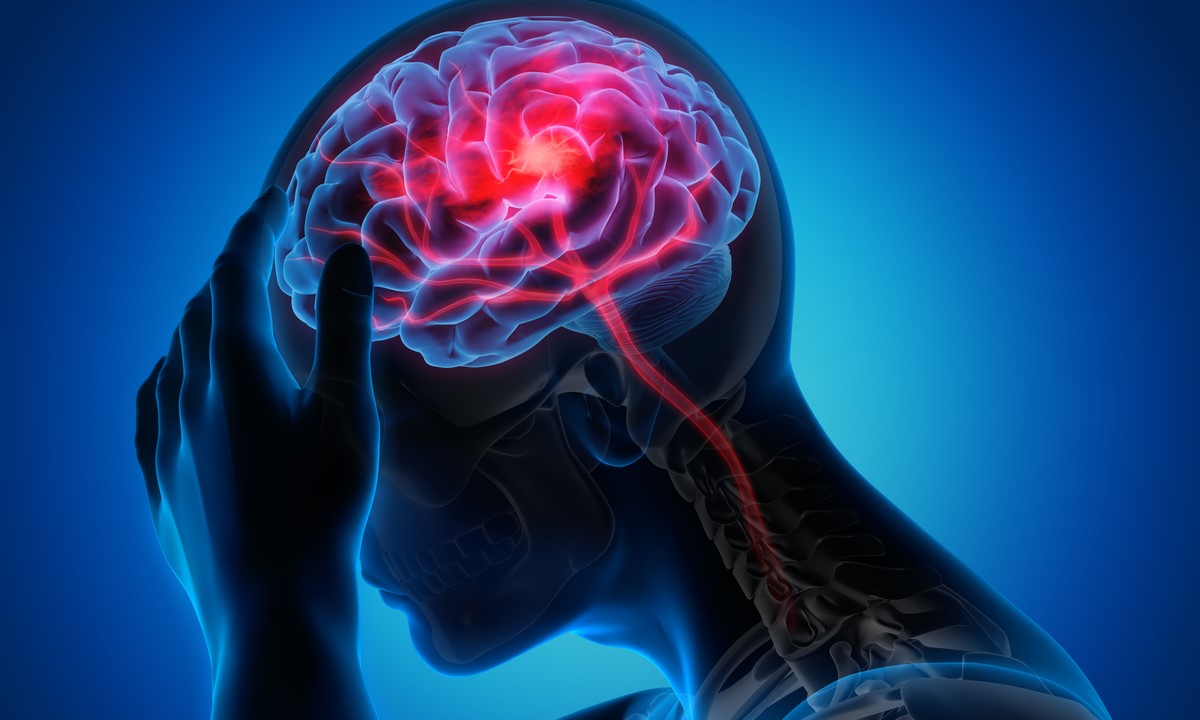Research shows that gamified rehabilitation can significantly improve hand-eye coordination, balance, and upper limb function. Speaking in an exclusive interview with South First, Dr Sindhu Vijayakumar explained that unlike repetitive physical therapy, games introduce motivation and feedback.
Published Oct 27, 2025 | 7:00 AM ⚊ Updated Oct 27, 2025 | 7:00 AM

Brain stroke. Representative Image. (iStock)
Synopsis: Interactive and virtual-reality games can accelerate stroke recovery by retraining the brain, improving mobility, coordination, and emotional well-being, says Dr Sindhu Vijayakumar, specialist in Physical Medicine and Rehabilitation. Unlike traditional repetitive exercises, gamified therapy motivates patients with instant feedback and engaging tasks, helping them regain strength and confidence even in severe cases, and across all ages.
Can playing games help rebuild the brain after a stroke? Doctors now say yes – when used correctly, games can be powerful tools in stroke rehabilitation, helping patients regain mobility, coordination, and confidence.
“After a stroke, patients often lose strength or control on one side of the body. Recovery depends on retraining the brain to reconnect those lost pathways,” explains Dr Sindhu Vijayakumar, specialist in Physical Medicine and Rehabilitation.
“Games, especially interactive or virtual reality based ones, make that process engaging and consistent.”
Speaking in an exclusive interview with South First, Dr Sindhu explained that unlike repetitive physical therapy, games introduce motivation and feedback.
Whether it is stacking blocks on a tablet, catching virtual fish, or steering a car on screen using hand motion sensors, these activities help patients perform therapeutic movements without feeling like therapy.
Research shows that gamified rehabilitation can significantly improve hand-eye coordination, balance, and upper limb function. Studies show that the brain thrives on challenge and reward. Games provide an instant feedback loop that encourages repetition – the key to neuroplasticity, or the brain’s ability to rewire itself.
“Rehabilitation can begin as early as day one after a stroke, once the patient is medically stable,” says Dr Sindhu. “If the blood pressure and heart rate are steady, we don’t wait. The sooner therapy begins, the better the brain’s ability to rewire itself.”
For many stroke survivors, repetitive exercises can feel tiring and demotivating. But when those same exercises are turned into games, the experience changes dramatically.
“When we convert an exercise into a game, patients stop focusing on the fact that they’re paralysed or struggling,” Dr Sindhu explains.
“Their attention shifts to reaching a target or achieving a goal on the screen. They get absorbed in the task – and that’s when real progress happens.”
At her rehabilitation centre, game-based systems developed by Indian startups integrate physical movements—like pressing a ball, extending an arm, or rotating a wrist—with interactive on-screen games.
“They might be catching a mosquito or tossing a ball virtually,” she says. “What looks like play is actually targeted upper limb or lower limb training.”
Dr Sindhu says both ischemic (clot-related) and hemorrhagic (bleed-related) strokes can benefit from gamified exercises. Even patients with severe paralysis can participate.
“If one side is affected, we attach the weak arm to a device and let the stronger hand assist,” she explains. “Over time, as movement returns, they start using the affected limb independently.”
What surprised her most was how adults and older patients responded.
“I initially thought only children would enjoy it,” she admits. “But even people in their 50s, 60s, and 70s love it. Once they start playing, they want to win. That motivation keeps them moving.”
Games, it turns out, are not just physical therapy – they are emotional therapy too.
“One of my patients, in his late 60s, was very withdrawn and depressed,” she recalls. “After introducing gaming-based rehab, he started talking again. He found something to look forward to. It gave him purpose.”
Within just three weeks, many patients show visible improvement.
“From zero power to partial independence, they start seeing results. That visible progress boosts morale and emotional health,” she adds.
Each programme is tailored to the patient’s strength and stroke severity.
“For mild strokes, we add resistance to make the task harder,” says Dr Sindhu. “For severe ones, we start slow, with attachments or bilateral games.”
Explaining the duration of sessions, Dr Sindhu says a typical session lasts 20–30 minutes, sometimes twice a day.
“The brain needs repetition to form new pathways,” she says. “These games make repetition enjoyable – which means patients practice more often and recover faster.”
But Dr Sindhu has one strong message for caregivers: love, but don’t over-help.
“In India, families tend to do everything for the patient – feeding, dressing, lifting. That kindness actually slows recovery,” she cautions. “If you really love them, let them try. Let them move, play, and make mistakes. That’s how they heal.”
She adds that gaming-based rehab is not limited to stroke alone.
“We use similar systems for neurological and musculoskeletal injuries, coordination issues, and balance problems,” she says. “It’s changing rehabilitation across the board.”
(Edited by Dese Gowda)
